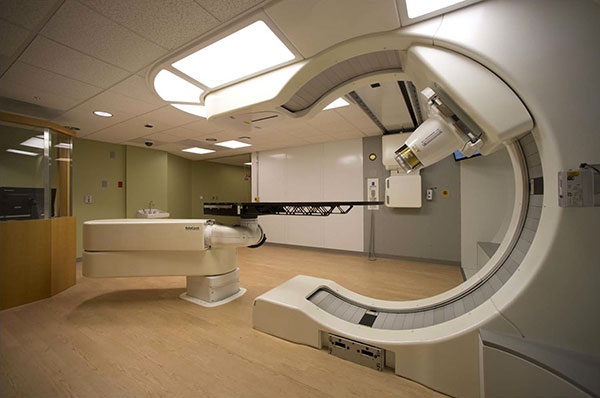What is Proton Therapy?
Dr Dodul Mondal was awarded a university funded fellowship on Proton Beam Therapy and Precision Radiation Oncology at Cancer Institute of New Jersey, Robert Wood Johnson University Hospital, NJ, USA.
He also went to Roberts Proton Therapy Center, Abramson Cancer Center, Pennsylvania University as a Visiting Scholar.
Dr Dodul Mondal Proton therapy or proton beam therapy is a type of radiation therapy that uses a positively charged particle to deliver radiation directly to the tumor.
Imagine that a cancer killing machine weighing 196 tons which can target a patient’s tumor with sub-millimeter accuracy, while preserving nearby healthy tissue and minimizing side effects. In the simplest terms, it is proton therapy.
Over the years, standard radiotherapy has been developed and improved, and many cancers could be effectively controlled. However, because X-ray beams are penetrating in nature, they pierce the body and exits through the other end delivering high amount radiation to healthy tissues before and after the tumor. This “excess dose” of radiation to healthy tissue may cause health problems in the future.
The advantage of proton beam therapy (also called proton beam therapy) is that the doctor can control where protons release most of the anti-cancer energy. The highest point of energy release is the “Bragg Peak”. The doctor can specify the location of the Bragg peak to cause the greatest damage to the target tumor cells and minimize dose to healthy tissues. The proton beam conforms to the shape and depth of the tumor, while preserving healthy tissues and organs.
How does proton therapy work?
Best Proton Therapy Doctor The best way to understand the principles of proton therapy is to look at the physics and engineering in proton accelerators or synchrotrons and beam delivery systems.
- The proton starts its journey from the ion source. In less than a second, hydrogen atoms are separated into negatively charged electrons and positively charged protons.
- Protons are injected into the linear accelerator through a vacuum tube, and within a few microseconds, the energy of the proton reaches 7 million electron volts.
- When the proton beam enters the synchrotron, it stays in the vacuum tube, where it accelerates to increase its energy to a total of 70 to 250 million electron volts, enough to place it at any depth in the patient’s body.
- After leaving the synchrotron, the protons pass through the beam delivery system, which consists of a series of magnets that shape, focus and guide the proton beam to the appropriate treatment room.
- To ensure that each patient receives the prescribed treatment safely and effectively, the facility is controlled by a computer and a security system network.
- When protons pass through the nozzle, a customized device (hole) shapes the proton beam, while another customized device (compensator) shapes the protons into three dimensions, thus delivering them to the depth of the tumor.
- At maximum energy, the proton beam travels 125,000 miles per second, which is equivalent to two-thirds of the speed of light.
- From the hydrogen tank to the patient, the proton usually travels 313,000 miles.
Pencil beam and intensity modulated proton therapy.
Pencil beam technology and IMPT are developed to make proton therapy sharper and more precise. These advanced forms of proton therapy are only a few millimeters wide proton beam, combined with precision and effectiveness and can provide unparalleled ability to treat tumors while minimizing the impact on the patient’s quality of life during and after treatment. Best radiation oncologist in Delhi NCR They rely on complex treatment planning systems and intricate magnets to target narrow proton beams and basically “spray” the radiation dose layer by layer.
The pencil beam is very effective in treating the most complex tumors (such as skull base tumors, childhood cancers, some breast cancers, prostate cancer, brain tumor, eye cancer, second course of radiation or re-irradiation), while healthy tissues and other key areas are not damaged. IMPT is also suitable for delivering precise doses of protons for tumors that may be adjacent to the spinal cord like nasopharyngeal cancers, sinonasal cancers etc.)

